My Scottish grandma could be rather forthright at times and was wont to sum up the appearance of passers-by with the succinct phrase ‘She’s no stranger to a fish supper.’
Had grandma been around in the early 20th century, however, perhaps she wouldn’t have had as much opportunity to make this pronouncement. Help was at hand for those who wanted to lose weight.
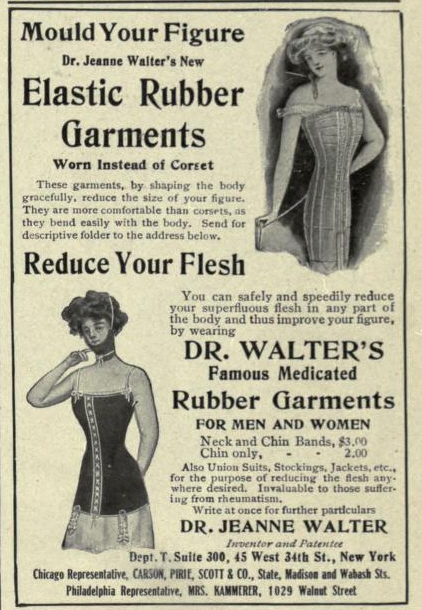 Source: The Theatre Magazine, January 1911
Source: The Theatre Magazine, January 1911
Jeanne Walter patented a rubber bandage in 1904. The following year she invented a two-piece rubber suit of undergarments designed to retain perspiration and heat for therapeutic purposes. By 1909 this had developed into a severe-looking full-body garment that was supposed to compress all your extra flesh down into a svelte figure – and, according to this drawing from the patent, make one arm shorter than the other.
Walter’s range grew to include specialised garments for different parts of the body – a brassiere to reduce large busts, leg wraps to create slender ankles and a beer-gut minimiser for men. Those with a double chin could try the Chin and Neck Reducer, to be worn for a few hours daily in the privacy of one’s own home. Pictured in the advert shown above, this also appears in the following image from 1915:
Walter’s 1909 patent presented the garments simply as foundation wear for holding in the flesh, but later advertising also capitalised on the sweatiness of the rubber and claimed that this would actively result in weight loss. One Canadian stockist used the slogan: Perspire and grow thin.
Taking rubber to your blubber was just one of many ways to try and lose weight in the early 20th century – pills, supplements and fat-reducing soaps were widely advertised as a quick and easy fix. But then, as now, there was no overnight solution.
A correspondent to the Washington Herald’s beauty column in 1910 received the following perennial weight loss advice from agony aunt Mrs Symes:
If you wish to reduce flesh, you should live on a diet and exercise.
——————————————————–
P.S. The Quack Doctor now has a Facebook page. To keep up to date with the latest posts, additions to the Old Newspapers gallery and Medical Curiosities section, plus a few extra bits and bobs, you can ‘Like’ the page here, or click on the button in the sidebar —->
.
.
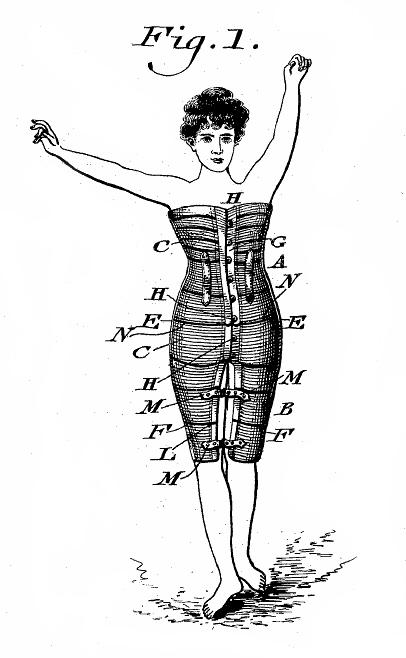
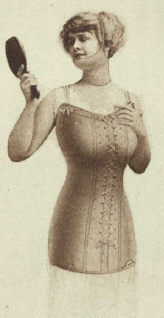
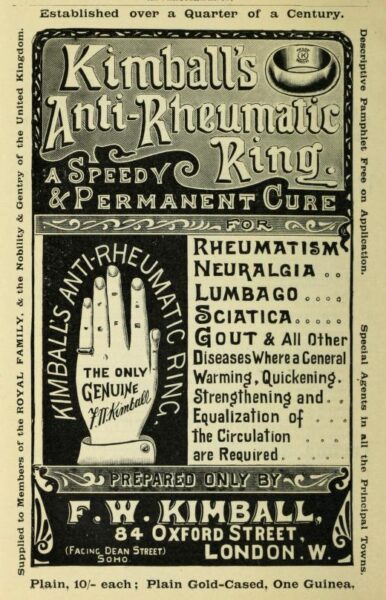
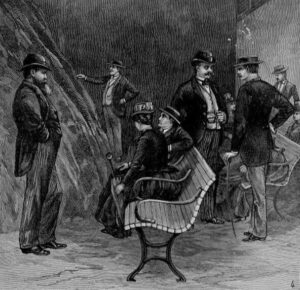

Usually when i see photos of people from this time they’re all pretty thin and losing weight would seem to be among the least of their goals. But I guess these devices are aimed at the rich who have excess money for food.